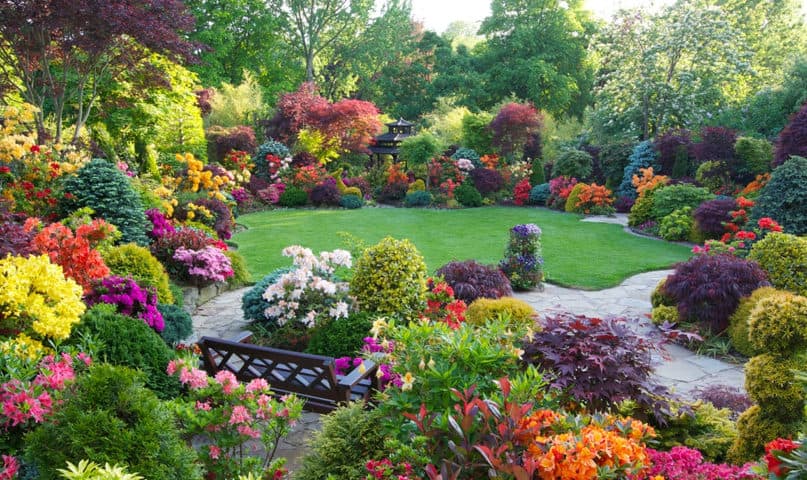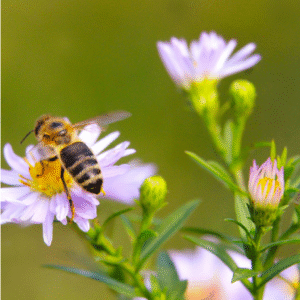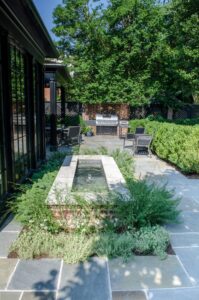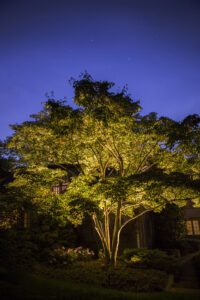By Renee Godfrey Quillin
The hot summer days are a reminder to take the time to sit back, relax and enjoy the beauty that surrounds you. This is also a great time to reflect on your outdoor living space by assessing the landscape. Over time landscapes change and early to mid-summer is the perfect opportunity to add a few plants here or there or even spruce (no pun intended) up an entire area with a landscape enhancement. As summer continues and the days become hotter and muggier is when gardeners and IPM (Integrated Pest Management) professionals are on high alert for pest and diseases that flourish in this type of weather. In addition to a thorough IPM check, gardeners stay busy keeping noxious and invasive weeds under control. Deadheading and irrigation monitoring are two other regular and just important responsibilities during hot summer months.
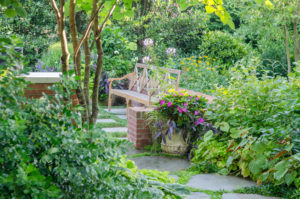
Summer is in full swing and all the perennials are in bloom, this marks a great time to fully assess the garden beds and surrounding landscape. Some plants may do great and this may encourage future dividing or transplanting which is determined based on the type of plant. Then there are some plants are not doing well in an area. This can be from a variety of reasons. The questionable area could be naturally too wet or could be too dry. Even something as a severely cold winter or an exceptionally wet year like 2018 could cause detrimental effects on a plant which isn’t apparent until the following growing season. Something as simple as removing a tree causing once a completely shaded flower bed to by a fully sunny location. On the other hand, tree has grown thus shading out more light making a sunny/partly sunny location to become full shade. In response to these ever-changing landscape situations it is good to take a step back and assess the area. From there we would create the best course of action. Ranging from something as simple to transplanting failing plants to an entire landscape enhancement for an area of the property.

Hot, humid summers that we experience in this area generates an onset of a wide variety of fungal issues such as sooty mold, powdery mild and blight. Along with fungal impacts there are an increase with pest issues such as plant-damaging scale, aphids, thrips, mites, etc. Continuous and thorough inspection from both the IPM (Integrated Pest Management) professionals as well as the gardener will help reduce any severe and detrimental effects that pest or disease may pose on a landscape. While closely monitoring for pest and diseases, gardeners are also regularly weeding within the flower beds. It is imperative to thoroughly check because some weeds could be a plant host to harmful pest that may attack other desirable plants in the garden. By removing the host weeds or habitat can greatly reduce the spread of an infestation and/or disease associated with that pest.
 Deadheading is the removal of spent flowers that have faded, turned brown or completely died back. Spring flowering perennials begin to naturally exhibit spent flowers that coincides with the rising temperatures. Regular deadheading keeps spring blooming perennials looking fresh well into the summer months. A variety of perennials such as Echinacea, Monarda, Nepeta, and Agastache require repeated deadheading during the summer months to encourage continuous blooms through-out the growing season. This will also ensure that the energy within the plant gets put back into the blooms and vegetative growth whilst redirecting the energy from going to seed.
Deadheading is the removal of spent flowers that have faded, turned brown or completely died back. Spring flowering perennials begin to naturally exhibit spent flowers that coincides with the rising temperatures. Regular deadheading keeps spring blooming perennials looking fresh well into the summer months. A variety of perennials such as Echinacea, Monarda, Nepeta, and Agastache require repeated deadheading during the summer months to encourage continuous blooms through-out the growing season. This will also ensure that the energy within the plant gets put back into the blooms and vegetative growth whilst redirecting the energy from going to seed.
 Transpiration, the rate at which water evaporates from the plants leaves, greatly increases thus plants losing a large amount of water during hot weather making it vital for plants’ roots to receive enough water. Monitoring the irrigation ensures that each area of the landscape is getting adequate moisture for the plants to thrive. Another very important reasons to monitor irrigation is to check for leaks or breaks in the irrigation itself. The gardening supervisor and/or manager will take the time to do a walk around while the irrigation is running to check if all zones are working properly. Adjustments will be made, or severe breaks or leaks will be reported when needed. If one is still unsure, a safe method of checking for adequate moisture levels is by probing the soil. Soil probing should be done to at least 6” below the surface to confirm there is enough moisture deep within the soil.
Transpiration, the rate at which water evaporates from the plants leaves, greatly increases thus plants losing a large amount of water during hot weather making it vital for plants’ roots to receive enough water. Monitoring the irrigation ensures that each area of the landscape is getting adequate moisture for the plants to thrive. Another very important reasons to monitor irrigation is to check for leaks or breaks in the irrigation itself. The gardening supervisor and/or manager will take the time to do a walk around while the irrigation is running to check if all zones are working properly. Adjustments will be made, or severe breaks or leaks will be reported when needed. If one is still unsure, a safe method of checking for adequate moisture levels is by probing the soil. Soil probing should be done to at least 6” below the surface to confirm there is enough moisture deep within the soil.
As you can see a gardener’s job is never done and during hot summer months it is critical for Planted Earth Landscaping to have a well-trained staff. We take pride in the slightest detail for overall plants health from practices such as proper plant placement and pruning techniques to irrigation monitoring and early pest detection. All of this is done for the sole purpose of having an extraordinary outdoor living space.

